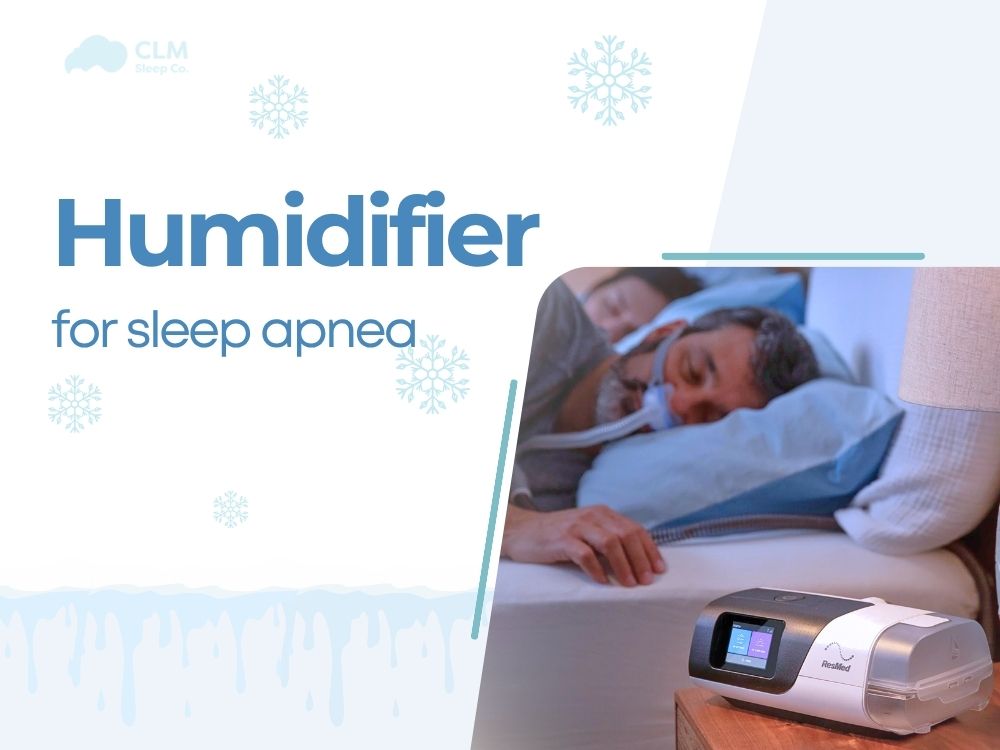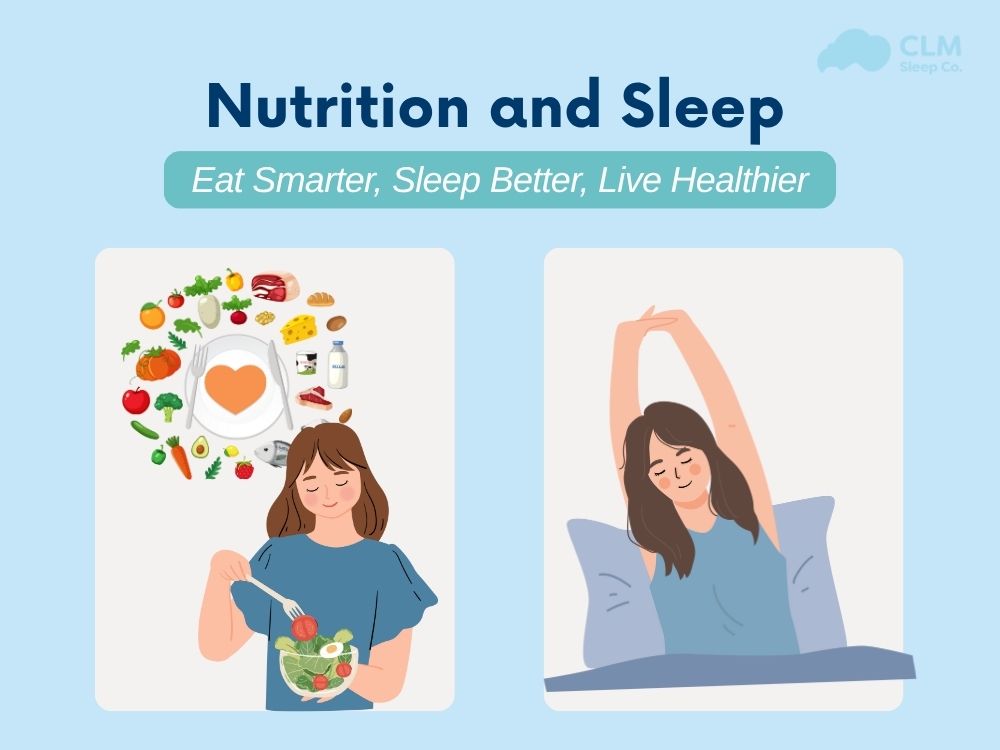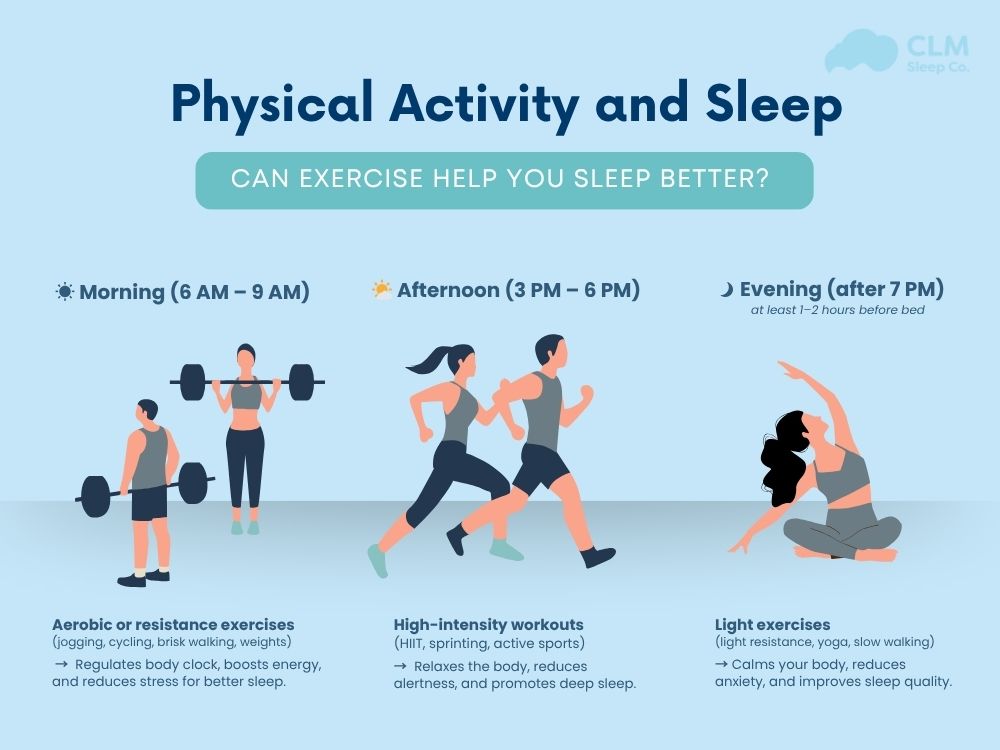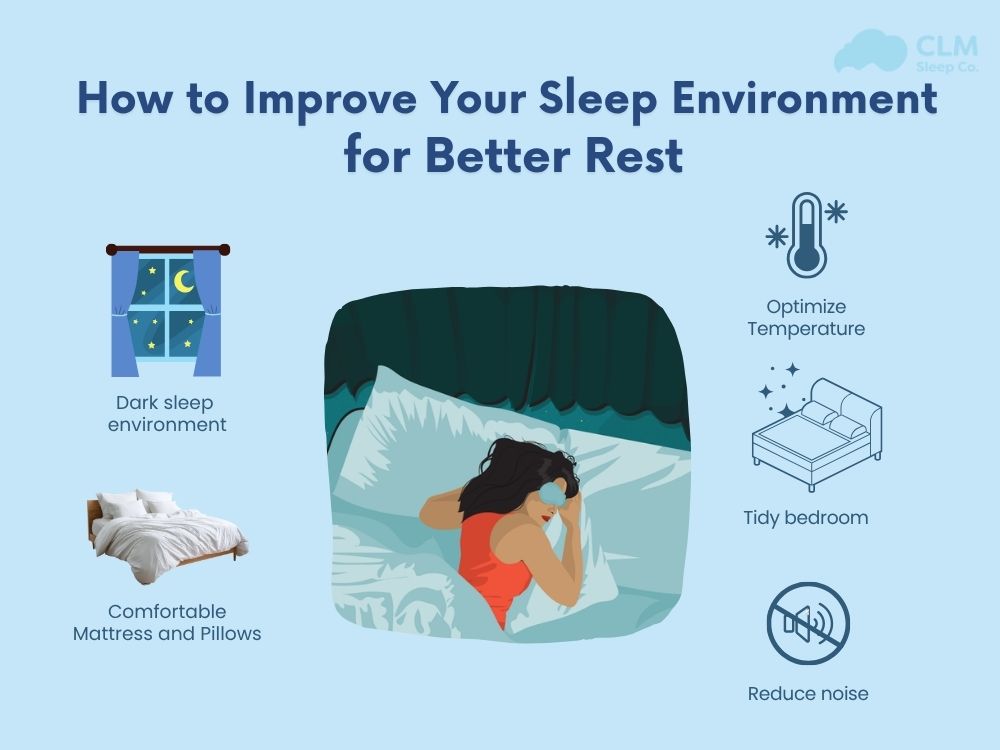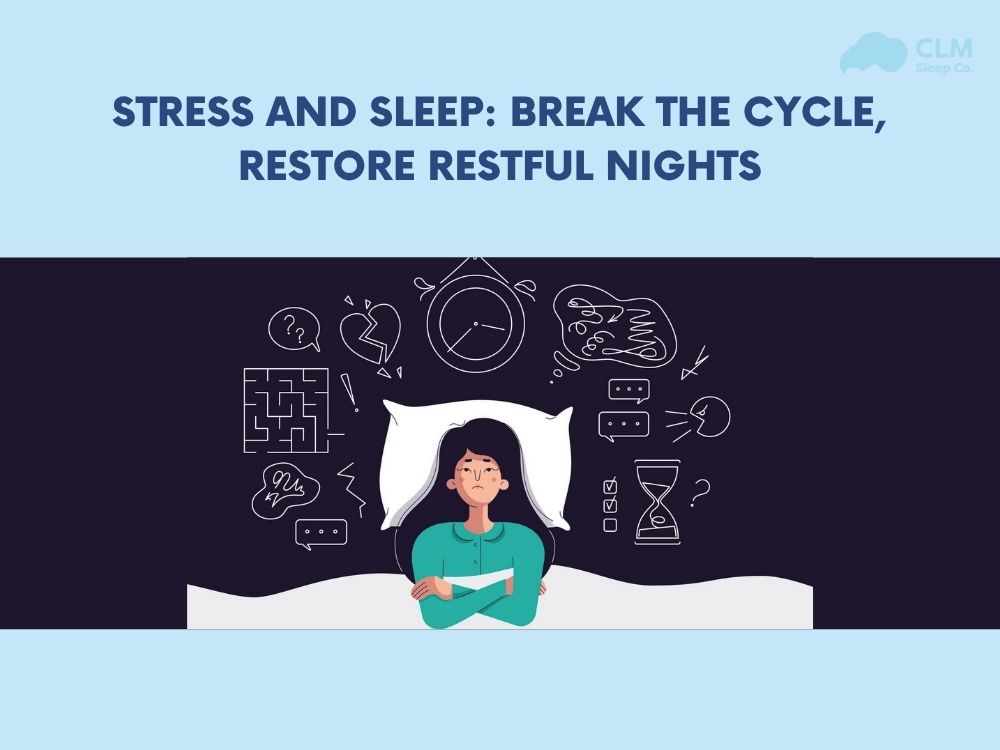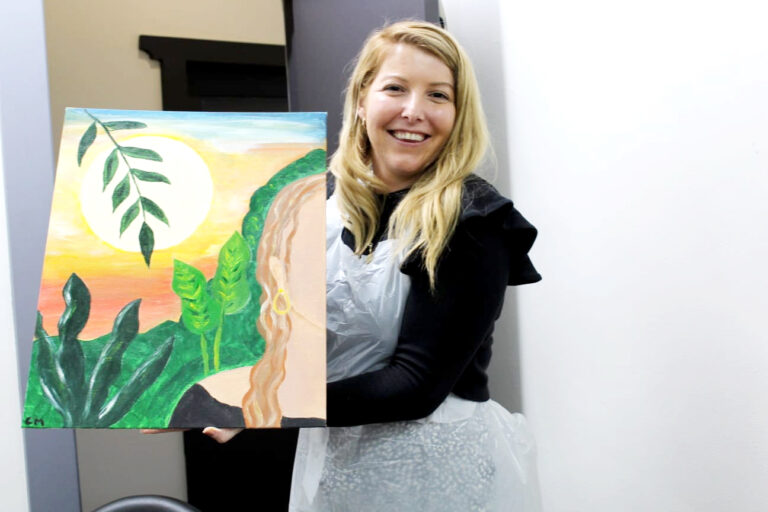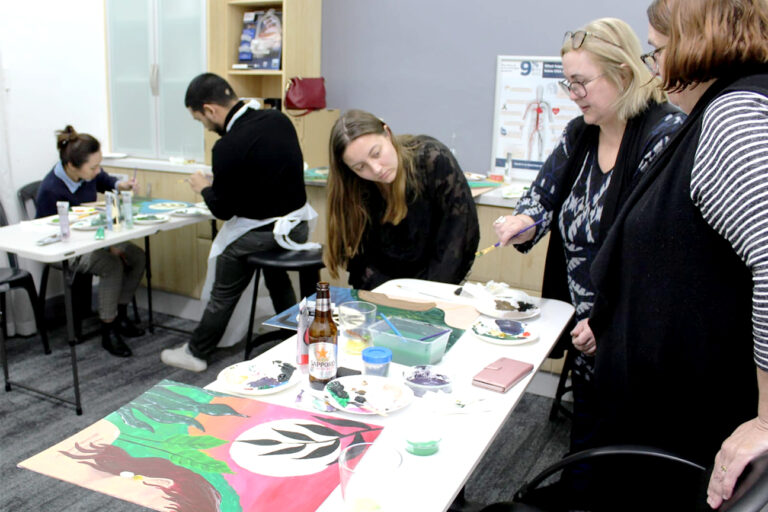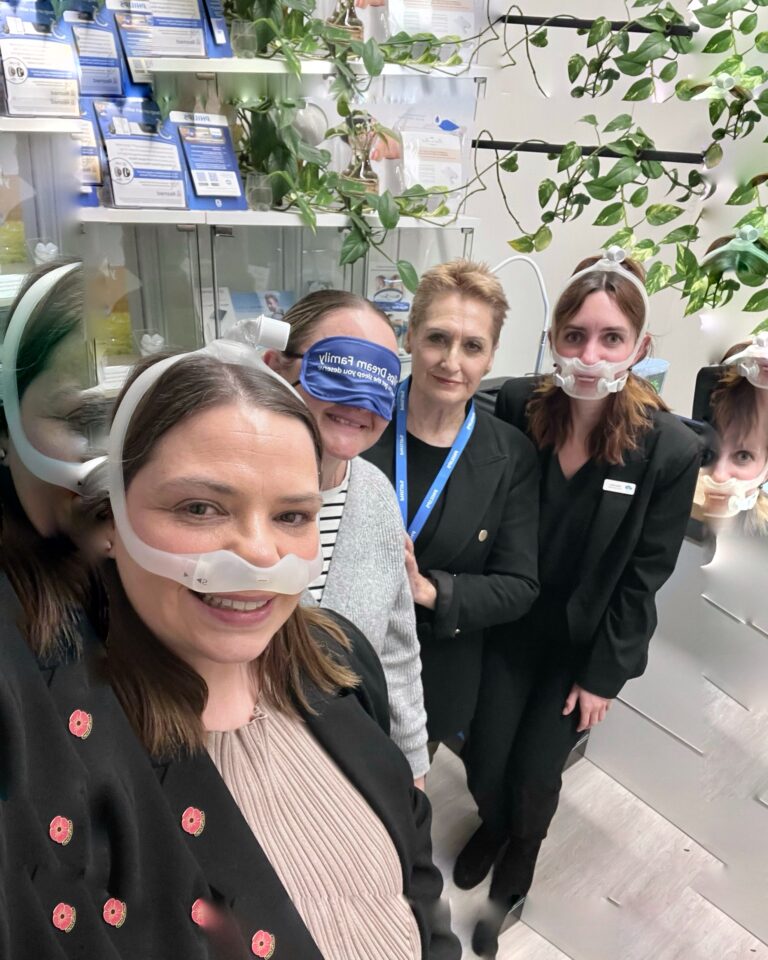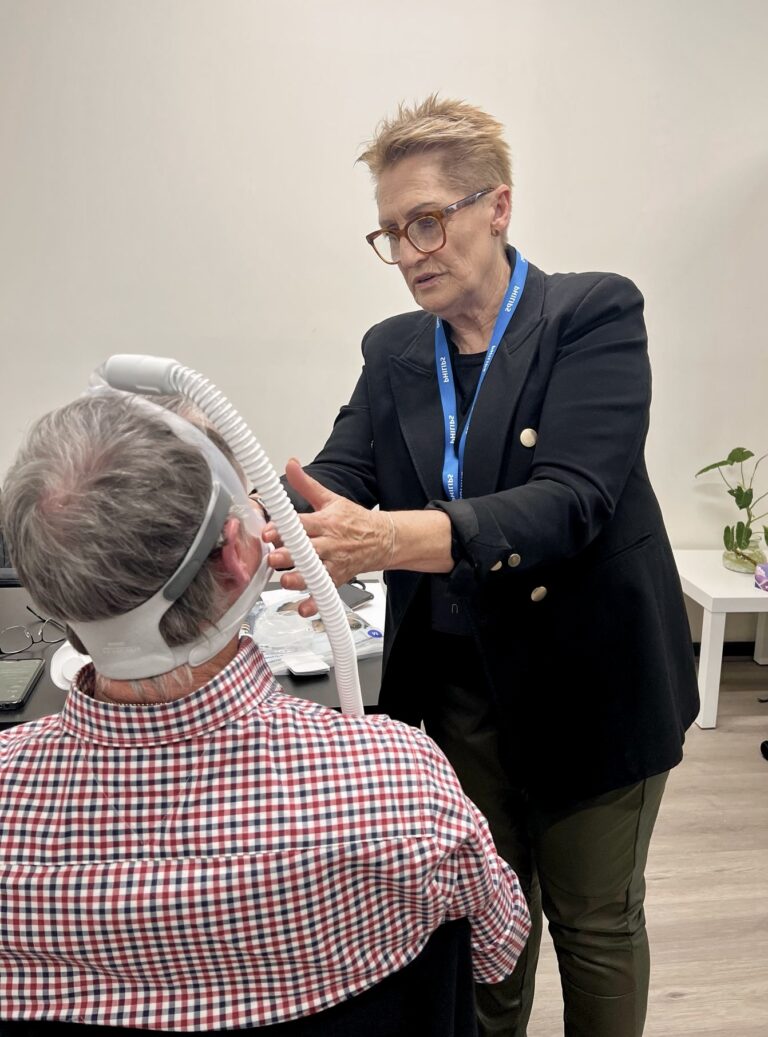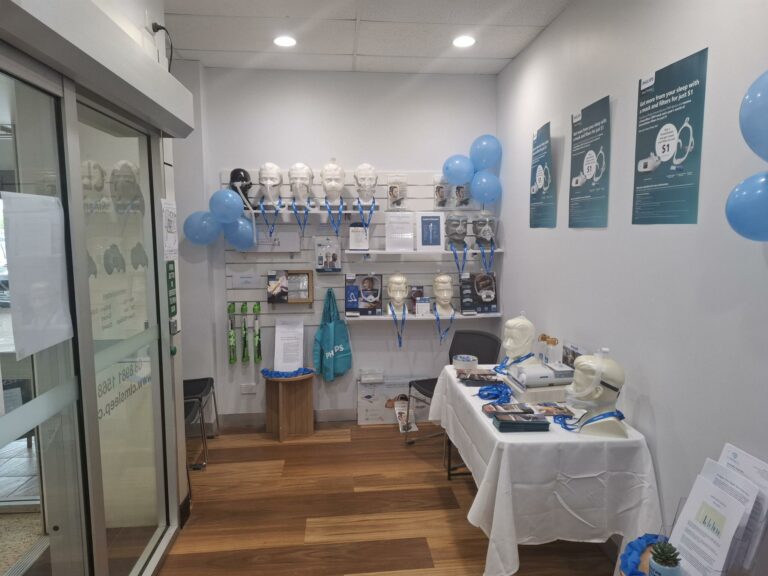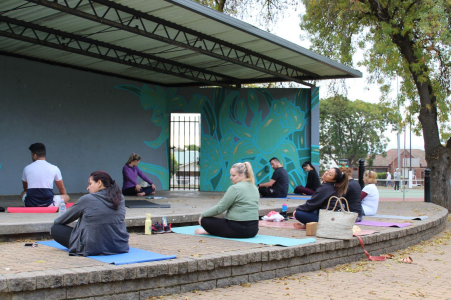In winter in Australia, the air is often dry and cold, especially at night when using a heater. In such dry environments, the symptoms of patients with sleep apnea become more severe. Therefore, using a humidifier is truly necessary for patients using a CPAP machine, as it is an effective supportive solution not only in winter but all year round, especially in low-humidity environments. A humidifier for sleep apnea will bring you comfort, ease, and improve your sleep quality every night. Let’s explore with CLM Sleep the advantages and disadvantages, how it works, and how to choose the right humidifier for you.
Why Humidifiers Matter for Sleep Apnea in Australia
The air in Australia, especially in cities like Adelaide, Melbourne, Canberra, and Perth, often has low humidity throughout much of the year, not just in winter. Even in spring or early autumn, the weather can still be quite dry, particularly when strong winds occur or when air conditioning is used indoors.
However, from May to August, as Australia enters its winter season, the weather becomes noticeably colder and drier, especially at night. The continuous use of heaters in bedrooms further reduces indoor humidity, often leading to a dry nose, sore throat, and respiratory discomfort, symptoms that are particularly problematic for people with sleep apnea.
That’s why maintaining optimal humidity in the sleeping environment is more important than ever. A humidifier for sleep apnea is an effective supportive solution that helps restore ideal moisture levels in the bedroom, soothes the airways, reduces congestion, and improves airflow while breathing. It also helps prevent dry mouth and throat irritation often caused by the constant airflow from CPAP machines. As a result, a humidifier not only improves sleep comfort but also enhances the overall effectiveness of sleep apnea treatment – especially during the dry Australian winter months.
How Dry Air Affects Sleep Apnea
Sleep apnea is a condition in which the body repeatedly stops breathing and then starts again during sleep. The pause in breathing can last from a few seconds to several dozen seconds, causing the patient to wake up easily and not achieve quality sleep. Common signs of this condition include loud snoring, difficulty concentrating, memory decline, and excessive daytime sleepiness even after getting enough sleep. Sleep apnea makes the patient constantly feel tired and sleepy, and over time, it affects overall health and the cardiovascular system.
Dry air, whether it occurs during winter or results from frequent use of heaters or air conditioning, can negatively affect people with sleep apnea. When the humidity in the air is low, the nasal and throat mucosa can easily become dry, leading to irritation, nasal congestion, and discomfort while breathing. These are factors that increase the severity of snoring and make airway obstruction more serious during sleep.
People with sleep apnea must use a CPAP machine to keep the airway from becoming blocked during sleep. However, if the air is too dry, the airflow from the CPAP machine can cause dryness in the nose and throat, leading to discomfort and making it difficult for many users to consistently use the machine. If this condition persists, it can reduce the effectiveness of the treatment and directly impact the quality of sleep each night. Therefore, CPAP users need to combine it with a humidifier to moisten the airflow and increase comfort during use.
See more: Is sleep apnea worse in the winter?
Benefits of Using a Humidifier
A humidifier not only helps soothe the airways for people with sleep apnea but also brings various health benefits, especially in Australia’s dry climate:
- Reduces nasal dryness, sore throat, and irritation, making it more comfortable for CPAP users to maintain regular use.
- Alleviates nasal congestion and throat irritation, which are common at night, especially when using heaters.
- Improves sleep quality by eliminating discomfort and reducing nighttime awakenings due to dryness.
- Helps reduce snoring by keeping the airways moist and clear.
- Prevents chapped lips, dry skin, and headaches caused by dry air, creating a more comfortable sleep environment, especially during winter.
Types of Humidifiers Suitable for People with Sleep Apnea in Australia
Depending on your needs and the equipment you are using, you can choose the type of humidifier that best suits your situation. For those using a CPAP machine, an integrated humidifier is the most optimal choice. Its built-in design helps maintain stable humidity levels in the airflow delivered to the nose, reducing dryness and enhancing treatment effectiveness.
Some of the most popular humidifier models in Australia, especially during the 2025 winter, include:
- ResMed AirSense 11 AutoSet with integrated HumidAir, ideal for long-term CPAP users.
- Philips DreamStation Auto CPAP with the Philips Respironics DreamStation Humidifier, effective in maintaining stable humidity and easy to adjust.
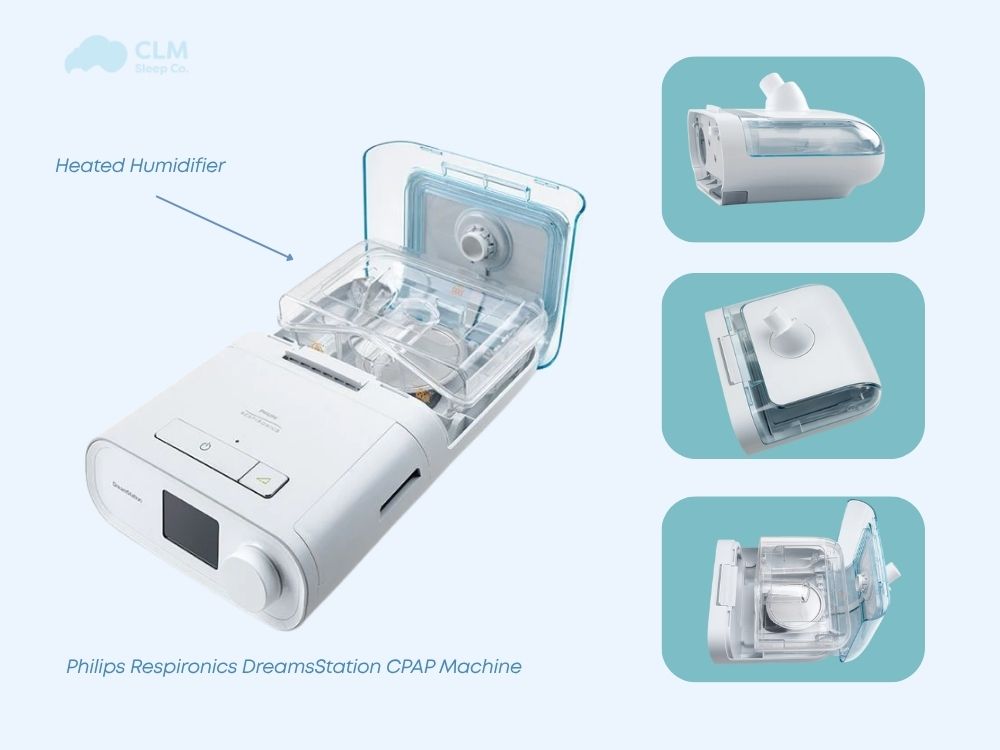
You can purchase these products at CLM Sleep’s retail stores, order online via CPAPDiscount, or buy from any other official retailer in Australia.
In addition, you may also consider choosing a Ultrasonic Humidifier, Evaporative Humidifier, or Warm Mist Humidifier to add moisture to the air in your bedroom.
Key Factors to Consider When Choosing a Humidifier for Your CPAP Machine
Choosing the right humidifier can significantly enhance your comfort and the effectiveness of your CPAP therapy. Here are some important factors to keep in mind when selecting a humidifier, especially in Australia’s dry climate:
Compatibility with your CPAP machine
Not all humidifiers are designed to work with every CPAP model. It’s best to check whether your machine supports an external or built-in humidifier, and ideally choose one made by the same manufacturer for seamless integration.
Adjustable humidity levels
Look for a humidifier that offers multiple humidity settings. This allows you to tailor the moisture level to suit your comfort, seasonal changes, or nasal/throat conditions.
Heated humidification option
Some humidifiers come with a heating element that warms the air as it passes through. This is especially helpful during winter, as it prevents cold, dry air from irritating your airways.
Ease of cleaning and refilling
A removable water chamber makes daily refilling and cleaning much easier. Keeping the humidifier clean is essential for hygiene and preventing mould or bacteria build-up.
Water tank capacity
A larger tank will run through the night without needing to be refilled, which is ideal for uninterrupted sleep.
Size and noise level
If you travel often, opt for a compact model. Also, consider a quiet-operating unit to avoid disturbing your sleep.
Australian safety standards
Ensure the humidifier meets relevant Australian electrical safety certifications such as RCM or SAA, especially if you’re buying online or importing from overseas.
Tips for Using a Humidifier with Your CPAP Machine
Using a humidifier with your CPAP machine can significantly improve comfort and therapy adherence, especially in Australia’s dry climate. To get the most out of your humidifier, keep these tips in mind:
Use distilled or filtered water
Always fill the water chamber with distilled or filtered water. Tap water may contain minerals that can build up inside the chamber and reduce its lifespan.
Refill the water chamber daily
Make it a habit to empty, rinse, and refill the water tank every day to prevent bacteria or mould growth.
Clean the humidifier regularly
Deep clean the humidifier chamber at least once a week with mild soap and warm water. Rinse thoroughly and allow it to air-dry completely before reusing.
See more: How often to replace cpap parts
Adjust humidity settings seasonally
You may need to increase the humidity level during winter or in dry environments, and reduce it during warmer, more humid seasons to avoid excess condensation (rainout).
Use heated tubing if needed
If you notice water collecting in your tubing (known as rainout), consider switching to a heated hose like ResMed’s ClimateLine or Philips’ Heated Tube, which helps maintain consistent temperature and prevents moisture buildup.
Keep your device level
Place the humidifier and CPAP machine on a flat surface that is lower than your head to avoid water backflow into the mask.
Monitor humidity levels
If your room is already humid, you might not need the highest humidifier setting. Using a room hygrometer can help you maintain a healthy humidity range (ideally 40–60%).
Store and travel properly
If you’re travelling, always empty the water chamber before packing. Some travel CPAP machines also have optional compact humidifiers or waterless alternatives.
Conclusion
Using a humidifier for sleep apnea is a simple yet effective way to improve your comfort and breathing, especially in dry climates like Australia’s. If you’re experiencing dryness or discomfort with CPAP therapy, adding the right humidifier can make all the difference to your sleep quality.
